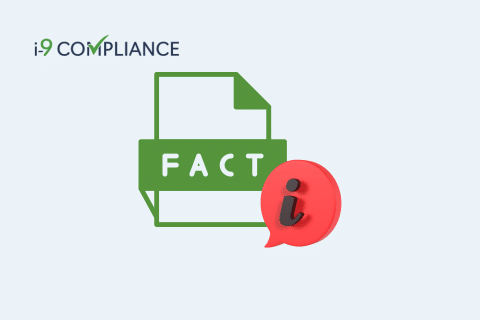DOJ Provides Fact Sheet on Preventing I-9 and Export Compliance Discrimination

April 27, 2023
The Immigrant and Employee Rights Section (IER) of the U.S. Department of Justice (DOJ) released guidance for avoiding discrimination during Employment Eligibility Verification (Form I-9) while adhering to Export Control Laws.
This clarification comes after a major automotive manufacturer settled with the IER. As such, the guidance includes an employee Fact Sheet. In addition, it emphasizes the need to avoid excessive documentation requests, particularly when hiring lawful permanent residents. The issue stems from U.S. export control laws regulating data disclosure to individuals not defined as “U.S. persons.” Under these laws, “U.S. persons” include U.S. citizens or nationals, lawful permanent residents, asylees, and refugees.
To provide export-controlled information, employers must perform an “export compliance assessment” to verify that an individual qualifies as a U.S. person. As a result, U.S. employers must regularly verify individuals’ documentation to verify their status. However, they must do so cautiously to avoid violating anti-discrimination laws.
This settlement clearly illustrated one crucial point about acting cautiously. In this case, the suit emphasized that the export compliance assessment is separate from Form I-9s despite the documentation presented by the worker qualifying for both processes. Therefore, to avoid confusion, employers should not perform these steps simultaneously.
In addition, employers cannot ask workers to provide citizenship or immigration status verification or proof of U.S. person eligibility during the I-9 process. Instead, workers should choose documents from the USCIS’s List of Acceptable Documents. Furthermore, a Form I-9 should not have information concerning export control requirements. Finally, employers should not store export control assessment documents with Form I-9s.
This settlement also clarifies when employers must perform export compliance assessments. For example, employees working with items or information covered by export-controlled laws must undergo the evaluation. Employers must also inform the workers about this requirement and when to expect the assessment.
Regulations like these can quickly confuse employees, leading to a high risk of costly violations. The best way to keep track of the Form I-9 process and ensure uniform and accurate completion is to incorporate an electronic I-9 management tool. This tool can provide guidance for completing each step of the process and help ensure uniform compliance.
Ensure compliance today by switching to an electronic I-9 management tool with I-9Compliance.